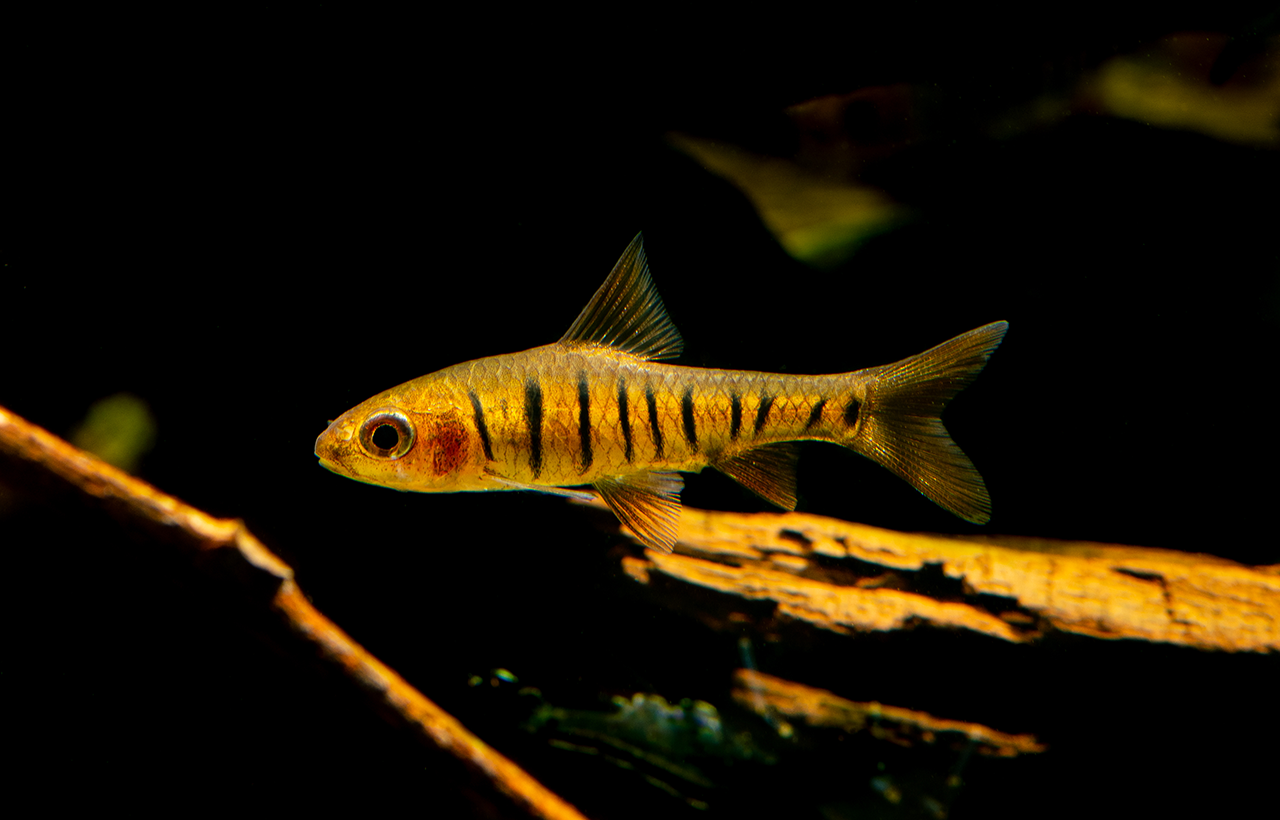- Size: 5 - 6 cm
- Temperature: 20 - 26℃
- pH: 5.0 - 7.5
- Hardness: 18 - 215ppm
- IUCN: LC, Least Concern
- Country of Origin: Central and South-western Africa
African Banded Barb (Enteromius fasciolatus) is native to central and south-western Africa, including Angola, Zambia, Namibia, and Congo. This species is a small carp with several vertical black bands on its side; its body color mainly ranges from olive to bright red. The brightness of the body color depends on its health, stability, and mood during the breeding season. The native environment of African Banded Barb is in tributary rivers with high oxygen and at "dambo" regions. ("dambo" refers to a kind of complex shallow wetlands in central, southern, and eastern Africa, especially in Zambia and Zimbabwe; it is caused by the rain season.) It is normally found on sand or rocky riverbed, rarely hiding among aquatic plants. In the rainy season, African Banded Barb is a kind of migratory fish; it will head to flood grassland to breed from the source of tributaries. With the protection of rich vegetation, the flooded grassland is a very suitable place for fish eggs and juvenile fish to grow. In its country of origin, African Banded Barb usually lives with Line-spotted Barb (E. lineomaculatus); these two species often appear together. There are also Orangefin Barb (E. eutaenia) and Copperstripe Barb (E. multilineatus), but they are relatively few in number. The latter prefers to inhabit inshore areas with abundant vegetation. In addition to the carp family, species such as Striped Topminnow (Aplocheilichthys katangae), Manyspined Ctenopoma (Ctenopoma multispine), and Southern Mouthbrooder (Pseudocrenilabrus philander) have been found in dambo. The water quality of African Banded Barb’s natural habitat is very soft (hardness 44ppm) with pH 6.8~7.4. This species has a mild character, suitable for polyculture with most small fish. In recent years, there have been a large number of artificially-bred individuals, which enables the African Banded Barb to become the most frequently circulated and most affordable African small carp in the aquarium market. In addition, it has a high tolerance for water quality, so it's easy to be raised; it is an entry-level ornamental fish that is suitable for novices.


